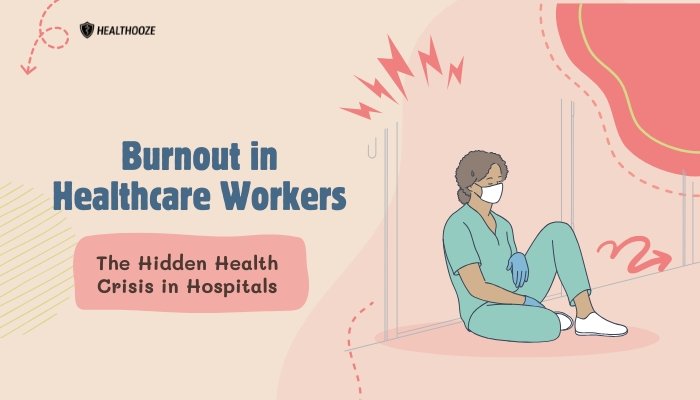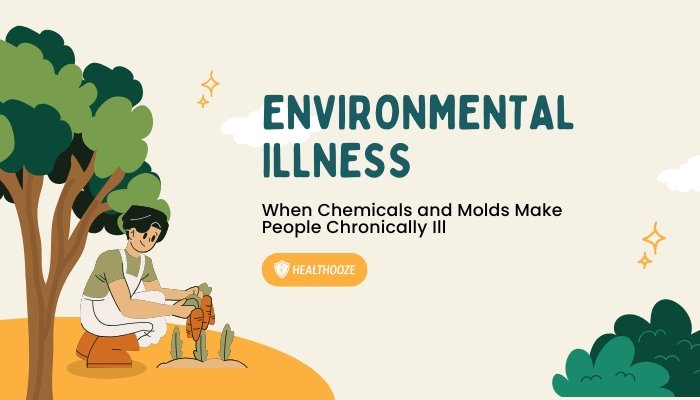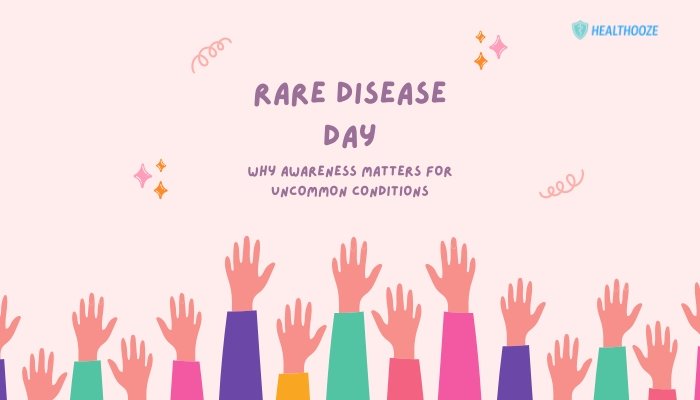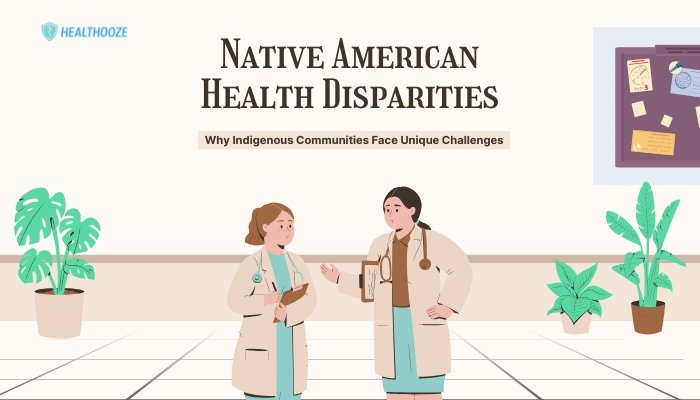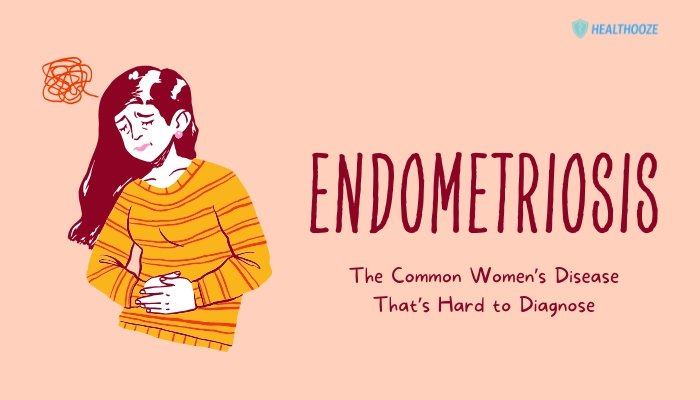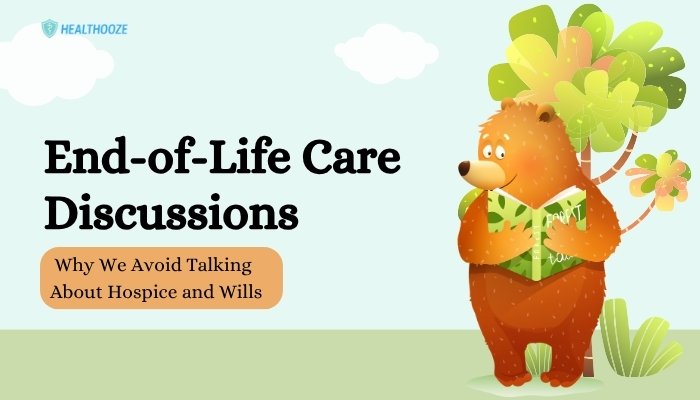Introduction
Modern healthcare workers face intense pressures on multiple fronts: high patient loads, emotional distress, increasingly complex technologies, and administrative demands.
Though these staff members dedicate themselves to saving lives, the reality is that many experience a growing mental and physical strain called burnout. Characterized by exhaustion, cynicism, and a declining sense of personal achievement, burnout carries serious implications for the workforce and patients alike. Left unaddressed, it can drive talented professionals out of the field, reduce care quality, and escalate healthcare costs.
This article explores the root causes of burnout in healthcare workers, identifies its warning signs, and highlights practical strategies for relief and prevention.
By recognizing burnout as an urgent health crisis, hospitals and policy leaders can adopt systemic changes that protect frontline personnel, ensure safer patient care, and shape a more sustainable healthcare environment.
Defining Burnout and Its Dimensions
Burnout is a psychological syndrome emerging from chronic workplace stress that has not been successfully managed. The most widely recognized framework describes burnout via three key dimensions:
- Emotional Exhaustion: Overwhelming fatigue where workers feel emotionally spent and unable to cope.
- Depersonalization (Cynicism): A detached or impersonal response toward patients, colleagues, or work tasks.
- Reduced Personal Accomplishment: A sense of ineffectiveness or questioning one’s competence and contributions.
In healthcare, where empathy and precision are crucial, these dimensions can sabotage patient relationships, decision-making, and morale. From medical students to seasoned physicians, nurses, and support staff, burnout risks loom across all roles and seniorities.
Causes of Healthcare Burnout
Burnout does not arise from a single source; instead, it reflects a culmination of organizational, cultural, and individual stressors.
Excessive Workloads and Long Shifts
- Staffing Shortages: Many hospitals operate with lean staffing, forcing staff to handle extra responsibilities or skip breaks.
- Extended Shifts and On-Call Demands: Nurses and physicians often endure 12-hour (or longer) shifts. They may carry beepers or cell phones even off duty, leading to minimal true downtime.
- Physical and Emotional Fatigue: Chronic underrest triggers cumulative stress, leaving little energy to maintain empathy or thorough focus.
Administrative Burdens
- Electronic Health Records (EHRs): While digital systems aim to streamline care, poor EHR usability can consume hours on data entry.
- Paperwork and Documentation: Constant charting, insurance forms, and compliance checklists fragment patient contact time, fueling frustration.
- Performance Metrics: Overemphasis on targets (e.g., patient throughput, revenue quotas) can overshadow genuine patient-centered practices.
Emotional Demands
- Exposure to Suffering: Regularly confronting trauma, severe illness, and end-of-life scenarios weighs on staff.
- High-Stakes Pressure: Mistakes can be life-threatening, intensifying fear of errors and personal guilt.
- Patient and Family Expectations: Tensions from families wanting immediate results or dealing with emotionally charged conditions add psychological strain.
Inadequate Support and Recognition
- Lack of Workplace Resources: Limited mental health services, insufficient breaks, and minimal peer support can leave workers feeling alone.
- Organizational Culture: A “tough it out” or perfectionistic mindset discourages help-seeking.
- Minimal Recognition: Feeling undervalued by leadership can sap motivation, especially when staff see no appreciation for their sacrifices.
Consequences of Burnout
Unchecked burnout extends far beyond worker dissatisfaction. It compromises patient care, disrupts teamwork, and burdens the broader healthcare system.
Patient Safety Risks
- Increased Medical Errors: Exhausted workers may misread orders, skip critical steps, or fail to notice early warning signs in patients.
- Reduced Empathy: Cynical or emotionally drained staff may appear indifferent, diminishing patient satisfaction and trust.
- Heightened Infection Rates: Shortcutting proper hygiene and infection control can occur if staff are too fatigued or pressed for time.
Staff Turnover and Vacancies
- Early Retirement: Experienced clinicians may exit the profession prematurely to preserve their mental health.
- Frequent Resignations: Nurses and allied professionals might switch to less stressful roles or leave healthcare entirely, worsening staffing shortages.
- Recruitment Costs: Hospitals spend heavily on replacements, training, and temporary staff, contributing to organizational instability.
Personal Toll
- Mental Health Disorders: Prolonged burnout correlates with depression, anxiety, and suicidal ideation.
- Physical Illness: Chronic stress can lead to hypertension, cardiovascular problems, or immune system depletion.
- Strained Relationships: Family conflict or social withdrawal often accompany a worker’s exhaustion and irritability.
Signs and Symptoms of Burnout
Recognizing warning signs early is crucial for timely intervention. Healthcare professionals, peers, and leadership should watch for the following cues:
Emotional and Behavioral Markers
- Irritability: Snapping at colleagues or patients over small issues.
- Apathy: Indifference toward tasks once approached with passion or thoroughness.
- Escalating Substance Use: Alcohol or drug reliance to unwind or self-medicate.
- Depressive Moods: Persistent sadness, guilt, or hopelessness about job effectiveness.
Physical Symptoms
- Chronic Fatigue: Waking up exhausted, unable to shake lethargy throughout the day.
- Sleep Disturbances: Insomnia or unrefreshing rest.
- Frequent Headaches or GI Upset: Tension headaches, ulcers, or IBS-like symptoms might reflect ongoing stress.
- Musculoskeletal Pain: Shoulder, back, or neck pain from constant tension.
Professional Performance Issues
- Cognitive Slips: Difficulty concentrating, forgetfulness, or mistakes in charting.
- Decline in Professional Attitude: Diminished attentiveness during rounds, skipping best practices, or ignoring team communications.
- Isolation: Pulling away from group huddles, skipping departmental gatherings, or refusing help.
Overcoming Barriers to Care
Despite serious risks, many healthcare workers underreport or underrecognize burnout, hindered by stigma, scheduling constraints, or fear of professional repercussions.
Cultural and Personal Obstacles
- Stigma of Weakness: Admitting burnout or seeking counseling might be seen as failing or “not cut out” for medicine.
- Licensing and Credentialing Concerns: Some fear that disclosing mental health treatment could jeopardize practice privileges.
- Self-Reliance: Healthcare workers often rationalize that “others have it worse,” delaying help and intensifying distress.
Strategies to Reduce Barriers
- Confidential Mental Health Services: Offering anonymous hotlines or off-site counseling fosters trust.
- Policy Revisions: Encouraging regulatory boards to focus on current impairment rather than penalizing professionals for past mental health diagnoses.
- Team-Based Education: Normalizing open conversations about stress, empathy, and resilience can embolden staff to share experiences or seek support.
Evidence-Based Interventions
Reducing burnout requires a multi-level approach blending personal coping skills with organizational reforms. Well-documented strategies can transform both the work environment and individual resilience.
Organizational Changes
- Adjusting Workloads and Schedules
- Enforce safe staff-to-patient ratios.
- Provide guaranteed meal breaks, shorter shift lengths, or rotating schedules to avoid accumulative sleep debt.
- Streamlining Administrative Tasks
- Improve EHR interfaces; minimize redundant documentation.
- Delegate or automate non-clinical tasks so clinicians can focus on patient interactions.
- Wellness Programs
- Onsite counseling or stress reduction sessions; yoga or fitness facilities.
- Debriefing protocols after traumatic cases to facilitate emotional processing.
Individual and Team Approaches
- Mindfulness and Stress Reduction
- Mindfulness-Based Stress Reduction (MBSR) courses show promise for lowering anxiety and emotional exhaustion.
- Simple breathing exercises before or after patient rounds can ease tension.
- Psychological First Aid
- Teams can learn to check in on colleagues after critical incidents, using supportive conversation to prevent isolating stress.
- Professional Coaching or Peer Mentoring
- Regular check-ins with mentors can impart coping strategies, especially for junior staff.
- Sharing vulnerabilities fosters solidarity and collective problem-solving.
Targeted Therapy and Support Groups
- CBT (Cognitive Behavioral Therapy): Teaches reframing negative thoughts, managing unhelpful perfectionism, and practicing healthy problem-solving.
- Group Sessions: Nurse or physician circles for discussing challenges, guided by a trained facilitator.
- Couples or Family Therapy: Helps caregivers align professional demands with personal life, maintaining supportive home environments.
The Role of Leadership in Prevention
Clinical leaders—nurse managers, attending physicians, department heads—play a decisive role in establishing a workplace culture that prioritizes well-being. By proactively supporting staff and modeling healthy behaviors, they can substantially diminish burnout risk.
Setting the Example
- Transparent Stress Management: Senior figures who openly acknowledge stress or attend wellness events encourage staff to do likewise.
- Empathetic Communication: Listening carefully to staff concerns, praising good work, and offering direct assistance fosters trust and morale.
- Reducing Hierarchical Barriers: Flattening rigid structures enables junior members to voice stress or seek mentorship without fear.
Policy and Resource Allocation
- Funding for Wellness Initiatives: Allocating budgets for mental health, counseling services, or social events.
- Incentivizing Work-Life Balance: Reward departments that effectively reduce shift lengths, plan coverage, or cross-train staff to distribute workloads fairly.
- Data Monitoring: Reviewing turnover rates, sick leave trends, or staff satisfaction surveys to gauge improvements or further needs.
Patients and Public: Understanding the Ripple Effect
Burnout in healthcare is not merely an internal staffing issue—its ramifications can undermine patient experience and overall community health.
Impact on Patient Care
- Communication Shortfalls: Stressed clinicians may struggle with empathy, leading to rushed or impersonal interactions.
- Delayed Diagnostics: Lapses in attention or teamwork hamper timely identification of complications.
- Poor Patient Satisfaction: A frazzled or exhausted demeanor can alienate patients, who desire reassurance and thorough explanations.
Community Consequences
- Reduced Access: Communities in rural or underserved areas might see entire clinics shutter if staff burnout prompts exits.
- Economic Burden: Replacing staff or grappling with malpractice claims inflates healthcare costs, passed on to consumers or taxpayers.
- Public Safety: In emergencies (e.g., pandemics, mass casualties), a diminished, burned-out healthcare workforce struggles to respond adequately.
Future Outlook: Building Resilient Healthcare Systems
A transformative approach is needed to ensure that future generations of healthcare workers can thrive in demanding medical environments without sacrificing their own well-being.
Embedding Resilience from Training
- Medical and Nursing School Curricula: Incorporate robust mental health education, self-care strategies, and boundary-setting.
- Resident Duty Hour Reforms: Monitor compliance, measure outcomes, and continually refine guidelines for safer conditions.
- Mentorship and Support: Align trainees with mentors who model healthy coping and encourage open dialogues about challenges.
Evolving Culture
- Evidence-Based Leadership: Hospital executives and management adopt data-driven approaches to scheduling, load balancing, and recognition of staff achievements.
- Collaborative Workflows: Team-based care that distributes tasks among nurses, PAs, pharmacists, and clerical staff can reduce individual overload.
- Self-Care as a Core Competency: Encourage staff to treat mental health and restorative practices as essential parts of professional development.
Policy Interventions
- National Guidelines for Well-Being: Standardizing acceptable staffing ratios, mandated breaks, or mental health coverage across healthcare systems.
- Incentivizing Provider Well-Being: Government grants or reimbursements that tie patient outcomes to staff well-being metrics, reinforcing the link between workplace satisfaction and clinical success.
- Public and Private Sector Partnerships: Cross-collaboration to champion innovations—digital mental health tools, advanced analytics—that refine staff scheduling or detect early burnout signs.
Conclusion
Burnout in healthcare workers stands as a hidden crisis with far-reaching implications for providers, patients, and society at large. Driven by intense workloads, administrative strain, emotional demands, and cultural stigma, burnout undermines the physical and mental health of those entrusted with healing others. While the problem is complex, targeted interventions at every level—organizational reforms, leadership engagement, personal coping strategies, and policy shifts—can yield transformative change.
By fostering an environment where empathy, work-life balance, and mental health are upheld, hospitals can better retain talent, safeguard patient well-being, and cultivate a sustainable healthcare system. The path forward demands collective commitment, but the rewards—healthier clinicians and safer, more compassionate patient care—are indispensable to the future of medicine.
References
- Maslach C, Jackson SE, Leiter MP. Maslach Burnout Inventory (3rd ed.). Palo Alto, CA: Consulting Psychologists Press; 1996.
- Dyrbye LN, Shanafelt TD. A narrative review on burnout experienced by medical students and residents. Med Educ. 2016;50(1):132–149.
- Shanafelt TD, Hasan O, Dyrbye LN, et al. Changes in burnout and satisfaction with work-life balance in physicians. Mayo Clin Proc. 2015;90(12):1600–1613.
- West CP, Dyrbye LN, Shanafelt TD. Physician burnout: contributors, consequences, and solutions. J Intern Med. 2018;283(6):516–529.
- National Academy of Medicine. Taking Action Against Clinician Burnout: A Systems Approach to Professional Well-Being. Washington, DC: The National Academies Press; 2019.
- Montgomery A, Panagopoulou E, Esmail A. Burnout in healthcare: the case for organisational change. BMJ. 2019;366:l4774.
- Dzau VJ, Kirch D, Nasca T. To care is human—collectively confronting the clinician-burnout crisis. N Engl J Med. 2018;378(4):312–314.
- Tawfik DS, Profit J, Morgenthaler TI, et al. Physician burnout, well-being, and work unit safety grades in relationship to reported medical errors. Mayo Clin Proc. 2018;93(11):1571–1580.
- Bodenheimer T, Sinsky C. From triple to quadruple aim: care of the patient requires care of the provider. Ann Fam Med. 2014;12(6):573–576.
- Reith TP. Burnout in United States healthcare professionals. Cureus. 2018;10(12):e3681.
- Busireddy KR, Miller JA, Ellison K, et al. Efficacy of interventions to reduce resident physician burnout. J Grad Med Educ. 2017;9(3):294–298.
- Shapiro DE, Duquette C, Abbott LM, et al. Beyond burnout: a physician wellness hierarchy designed to prioritize interventions at the systems level. Am J Med. 2021;134(1):7–11.

